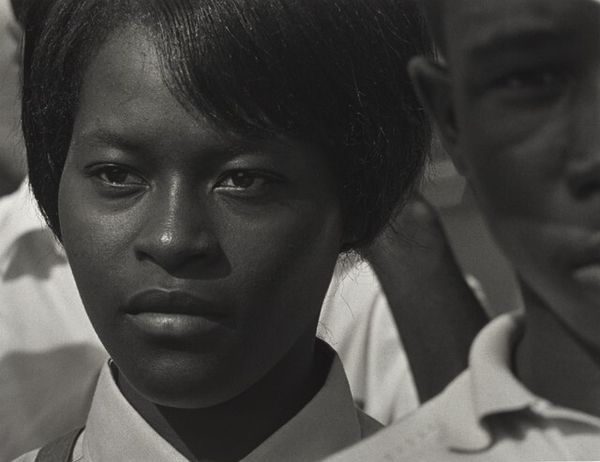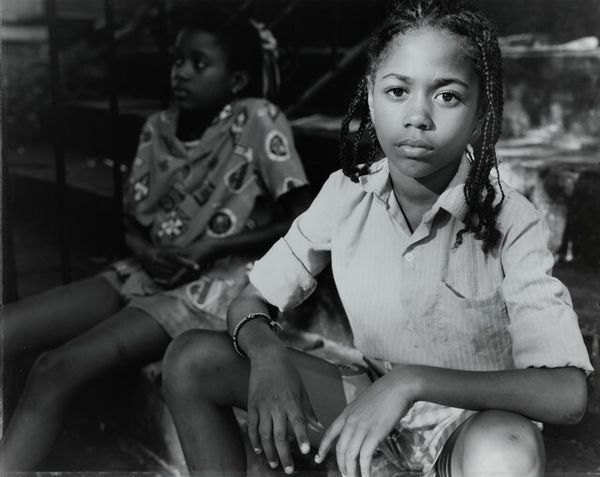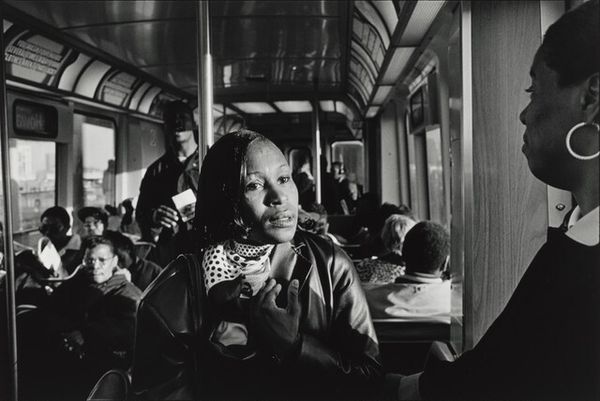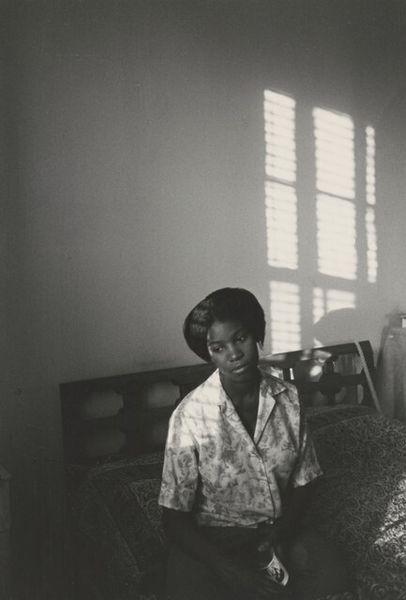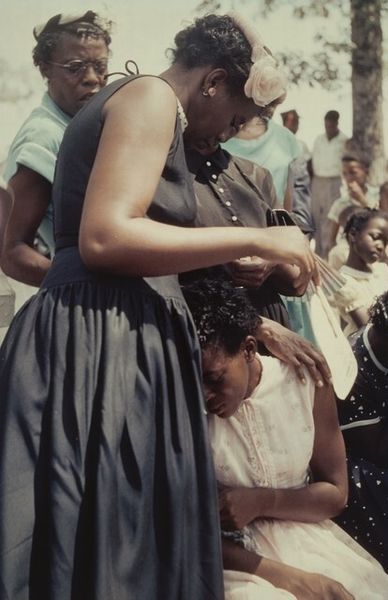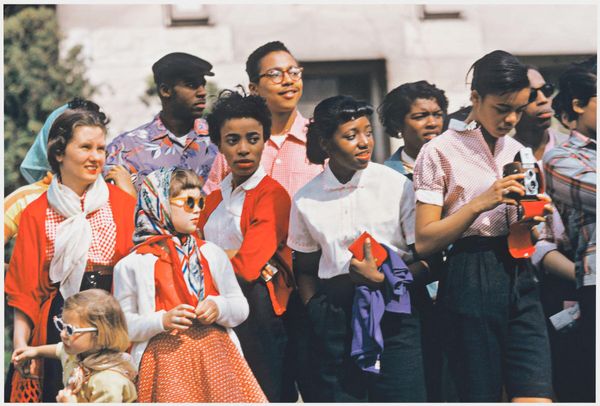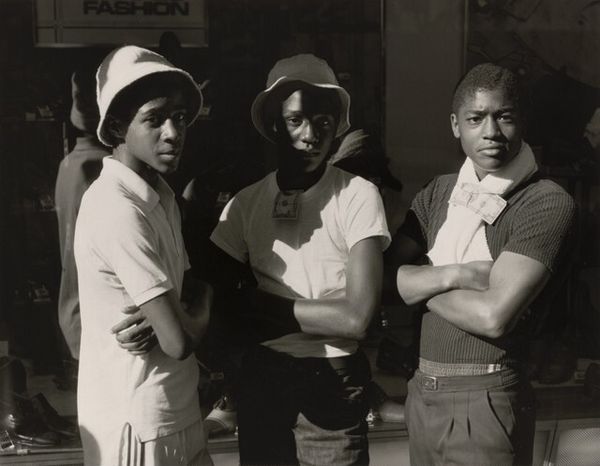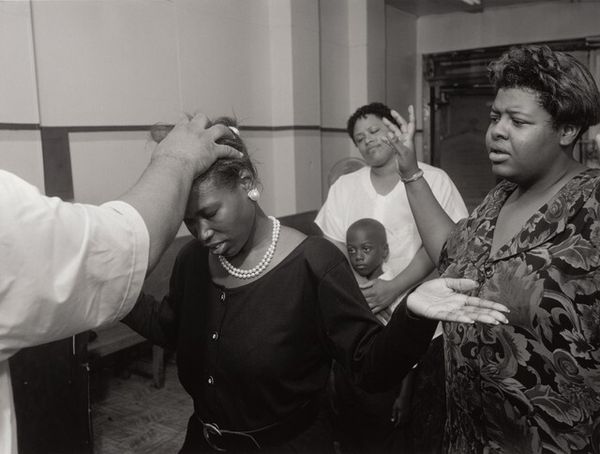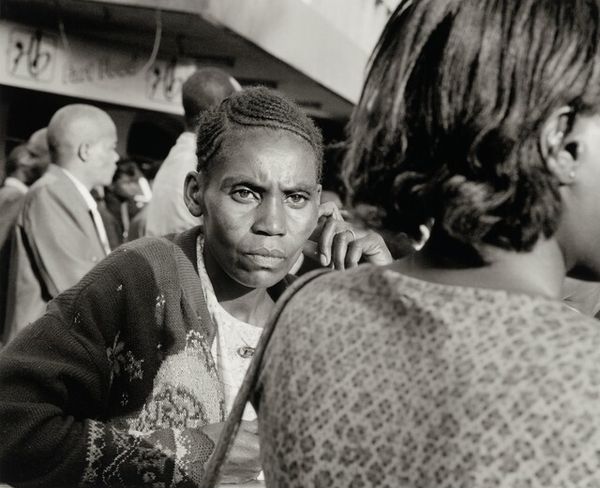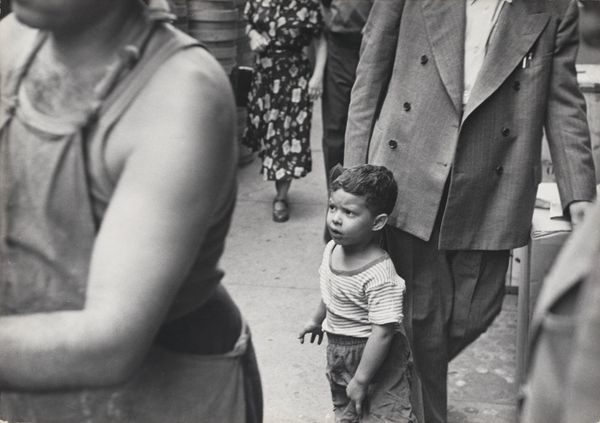
photography, gelatin-silver-print
#
portrait
#
black and white photography
#
black and white format
#
warm monochrome
#
archive photography
#
street-photography
#
photography
#
cultural celebration
#
gelatin-silver-print
#
monochrome photography
#
realism
Dimensions: image/sheet: 19.5 × 22.4 cm (7 11/16 × 8 13/16 in.) mount: 45.6 × 35.5 cm (17 15/16 × 14 in.)
Copyright: National Gallery of Art: CC0 1.0
Editor: This gelatin silver print, titled "Mexico" by Milton Rogovin, dates between 1953 and 1961. The photograph shows a young woman looking off to the side in a train car; a variety of other people, mostly men, are visible. It feels intimate, but there’s also a sense of distance, perhaps a reflection of the photographer as an outsider. How do you interpret this work? Curator: I see Rogovin engaging with a complex interplay of visibility and representation. The intimacy you sensed is palpable. But consider this: who has the right to represent whom, and under what circumstances? Rogovin, an American photographer, is documenting indigenous people in Mexico. What responsibility does he have to their narratives? Does he flatten their complexity, or does he amplify voices often unheard? Editor: That’s a great point. I was focusing on the aesthetics, the composition, without really considering the power dynamics involved. Curator: Exactly. Think about the woman’s gaze – averted, seemingly lost in thought. Is this a sign of resistance, a reclaiming of her own interiority against the external gaze? And the men with their large brimmed hats? Are these symbols of cultural identity or props in Rogovin's narrative? What do you notice about their positioning in the composition? Editor: Now that you mention it, she's looking to the left and everyone else appears to be focused forward or downward. Her gaze sets her apart. Curator: Precisely. This photograph invites us to question the act of seeing itself, the ways in which photography can both reveal and obscure the lived realities of others, particularly marginalized communities. How does understanding Rogovin's role as an outsider affect how we interpret her expression, her experience, in this context? Editor: I'm struck by the layers of interpretation at play here. I went in thinking about realism, but I'm coming away thinking about ethics and representation. Curator: That’s the power of art! To push us beyond the surface and confront uncomfortable questions about ourselves and the world around us. Hopefully, people reflect on that.
Comments
No comments
Be the first to comment and join the conversation on the ultimate creative platform.
